Our time in Tbilisi was coming to a close, which also meant our time in the Caucasus was coming to a close. But we had a bit of unfinished business. There was one more sunset to be watched in the Caucasus. We were staying in a hostel in the Old City, which is built up the slopes of Mount Mtatsminda. There are several noteworthy landmarks on top of this mountain, but we were initially interested in a particular site: Narikala Castle.
On the upper slopes of Mtatsminda is this ancient, mostly crumbling fortress that houses a church of St. Nicholas. But it wasn’t always a ruin. Back in the 4th century when it was built, Narikala was a Persian citadel. The walls date to the 8th century, which were mostly built up by Arab emirs (emir primarily refers to Muslim — generally also Arab — rulers).
In the subsequent centuries, Narikala was under the jurisdiction of several more governances — Georgians, Turks, Persians again. Due to its strategic position overlooking the city, it was always an important point of contention and, once captured, an important stronghold. However, there’s only so long an ancient fortress can support constant occupation before something happens.
In the case of Narikala, the Russians happened. In 1827, it was being used for munitions storage. There was a massive explosion, and then Narikala became the ruins we know today. The site remained nothing but ruins until a church of St. Nicholas was built in the 90’s.
See the church and walls up on the hill? That’s Narikala and the Church of St. Nicholas. The Old City is the collection of buildings under it. It doesn’t look that high, but the streets of the Old City were so steep that we’d watch cars make it partially up before they’d be forced to abort. Making the walk back to our hostel from the riverbanks every day was tough. And it was hot. Like, really, really hot.
But Narikala was our destination and we fought our way up the mountain to see it. And it was cool! To me, there wasn’t a lot to see at the fortress unless you’re interested in churches. But the stairs up the walls were steep and the view amazing.
There’s something about the sprawl of Tbilisi down the valley. It’s very small-scale, if that makes sense. Despite the apparent distance from any given vantage point, details are still readily discernible. We covered a big distance on foot throughout our few days here, and it wasn’t until we were above it all that we could appreciate how far we’d actually gotten.
But to be honest, I’m a little tired of trying to string together some metaphors to describe places. I’ve kind of exhausted my arsenal. So have this — Tbilisi is just really fucking cool. I’m at a bit of a loss for words to accurately describe it, because it’s unlike any city I’ve been to. It just is. It’s Tbilisi. There’s no pretense. It makes absolutely no attempt to be anything it’s not, nor does it apologize in any way for being itself. It’s personal and engaging. It just is.
So on our next-to-last night, we decided to push into the city in a different way. Meaning, we decided to get above it.
Sololaki Hill
So back to Mount Mtatsminda. Or rather, the adjacent but equally-high Sololaki Hill. Only this time, we started down by the river and caught a ride up the cable car right to the feet of Kartlis Deda, or the Mother of Georgia.
And from the top of Sololaki hill, all could be seen. Every last rooftop, every ornate window, every church steeple. There’s a uniformity to Tbilisi’s buildings. It’s a vast lake of red and ocher, with streaks of green and towering glass islands in the distance. The further the sun sets behind the mountains across the valley, the redder everything becomes.
We stayed awhile on top of the hill. The city is laid out in such a way that the major buildings catch the light of the setting sun and shine out, which made the view all the more fiery. As it sank lower, the Trialeti Mountains, an arm of the Greater Caucasus that runs west of Tbilsi, cast long shadows across the valley.
We were almost happy to go to bed once the sun was down. But there had to be other vantage points to be found. And I did not lug my tripod across Asia — literally — to not try some light trails. My opportunities to practice long-exposure nighttime photography have been few and far in between, the most recent prior to this being the Karakum Desert in Turkmenistan, and before that Nepal.
We crossed the river and promptly got lost in a maze of alleys as we tried to find a way on top of the buildings on the hill. I stopped to take a few photos of the signs, and lost my brother. I wandered around for a few minutes and approached a Georgian guy for help.
“Hey, did someone walk down this alley?”
He looked at me and shrugged in the way that people do to say, I don’t speak English, dude.
I put my hand a few inches above my head and pointed to my camera.
“Uh, big guy with a camera?”
He laughed, shrugged, and pointed me down an alley. Peter was not down that alley. When I exited again, the guy gave me a well-meaning shrug and I continued to get myself more lost as I tried to find my brother. My name came shouted from down a different alley, and off I went again.
Peter had found a hotel with a rooftop restaurant. We asked the host if we could go up and take photos, and then climbed the spiral staircase into quite a fancy place. My ratty flannel and dirty shoes were not the dress code. But we occupied a corner of the balcony and took some photos anyway.
So full disclosure: I am not a good nighttime photographer. It’s a skill I’ve been trying to develop for a little while, and every so often it yields me a cool photo or two. It was a windy night in Tbilisi, so I didn’t really get anything great. But dammit, I’m gonna inflict some on you anyway!
When the hotel restaurant closed at midnight, we were asked to leave and headed back to our hostel. It wasn’t long before our plans would split us up; Peter back to the US and I onto Turkey. So the last hurrah to Georgia was a good one.
Bonus: Two Perspectives on Some Landmarks
So here’s something I thought of as I was writing this. I realized I have a few photos of some major landmarks in Tbilisi from both the ground level and from the aerial view, so I’m gonna share those pairs.
Bridge of Peace
This is a pedestrian bridge that was completed in 2010. It’s kind of this big experiment in light displays. The walkway is embedded with motion-sensitive lights that illuminate each walker’s footsteps, and the covering runs various patterns that resemble the night sky, waves, and messages in Morse code.
Freedom Monument
Also called the Saint George Statue, this is a monument to Georgian freedom and independence in the Freedom Square. It was sculpted and gifted by Georgian sculptor Zurab Tsereteli in 2006.
Mtatsminda Pantheon of Writers and Public Figures
Mtatsminda Pantheon is a necropolis overlooking Tbilisi. Some of Georgia’s most influential writers, artists, scholars, and national heroes are buried here. We wanted to visit, but honestly, the road was very steep and it was very hot. It was officially opened in 1929, and the first to be buried was Russian writer Alexander Griboyedov (who died in Iran in 1829, so I’m a little unclear about why he’s there).
Holy Trinity Cathedral of Tbilisi
Last but not least, Holy Trinity Church, also called Sameba Church. I simply can’t come to Tbilisi without mentioning this church. It dominates the skyline, and rests squarely within Tbilisi’s Armenian Alvabari neighborhood. It is the main church of the Georgian Orthodox sect of Christianity. It was completed in 2004 and is the third-tallest Eastern Orthodox church in the world, and one of the largest religious buildings in the world of any religion (by area).

So let’s close out with a panorama of Tbilisi to give an idea of how freakishly massive this church is, and how beautiful Tbilisi is. I love this city. I’ll be back.
For now, Black Sea bound as I close in on the end of the Silk Road.
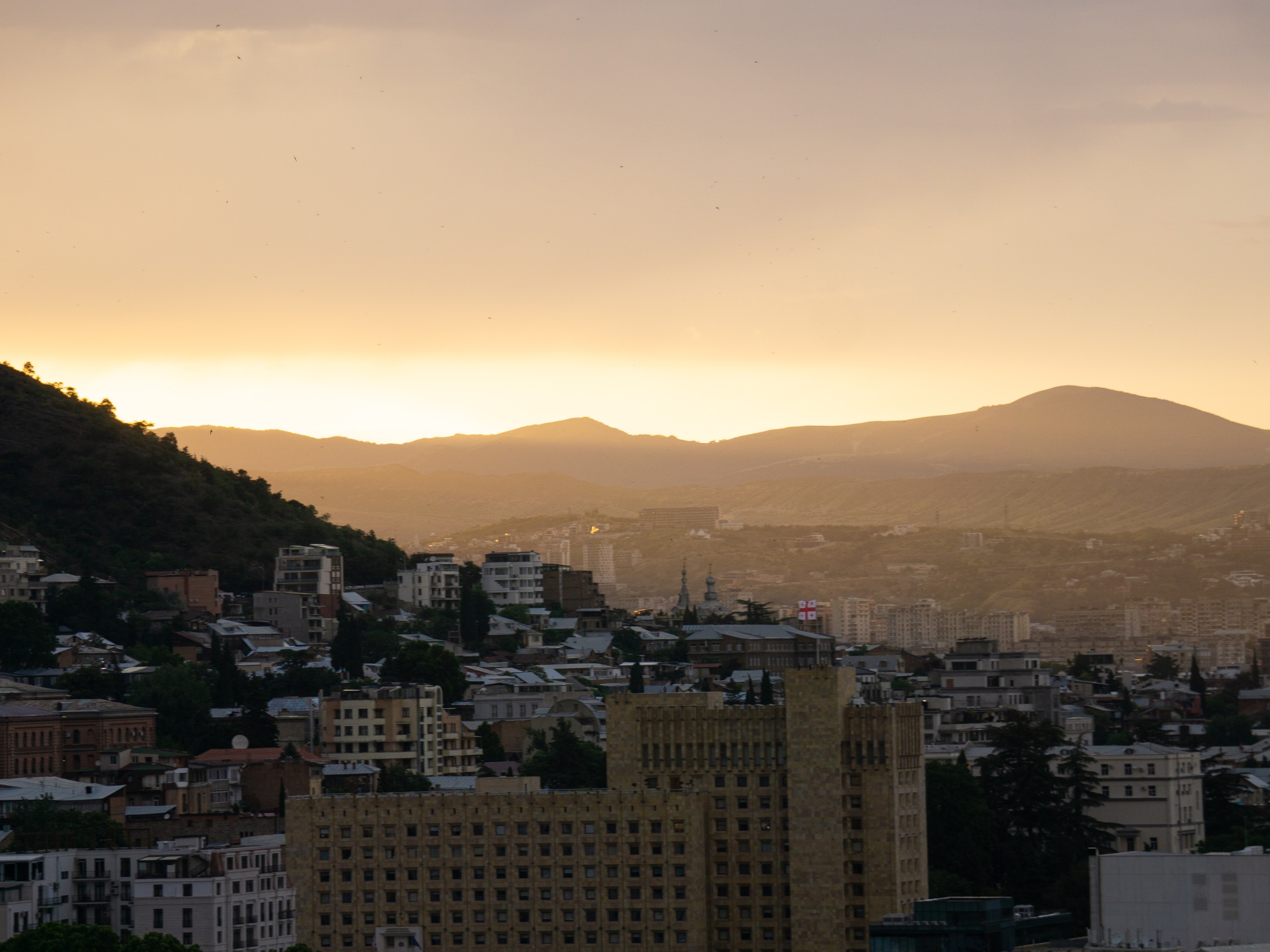
















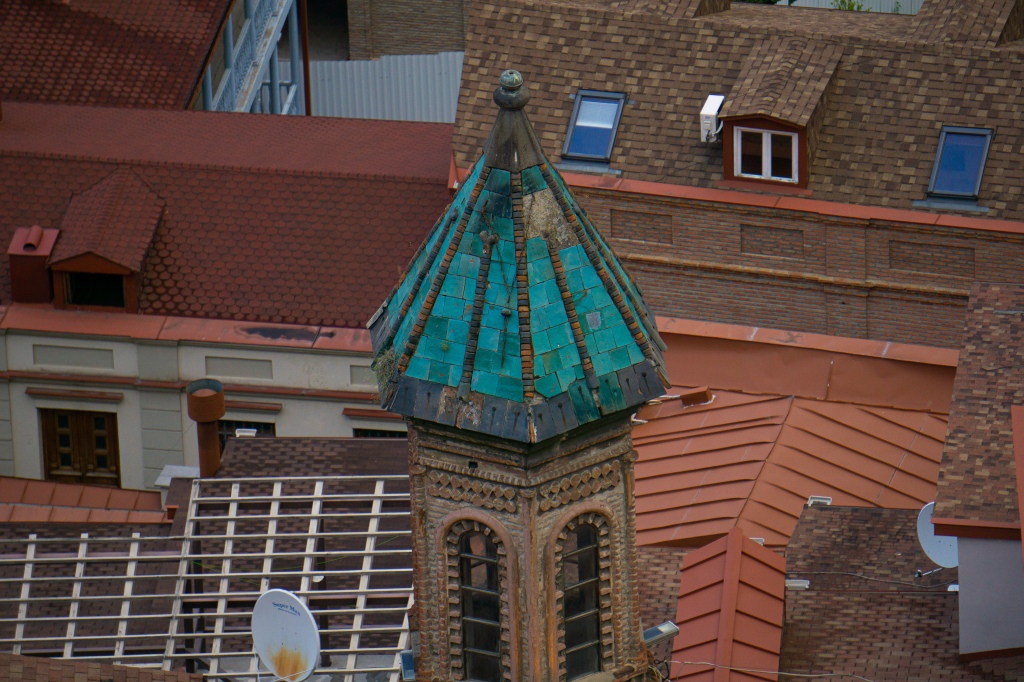




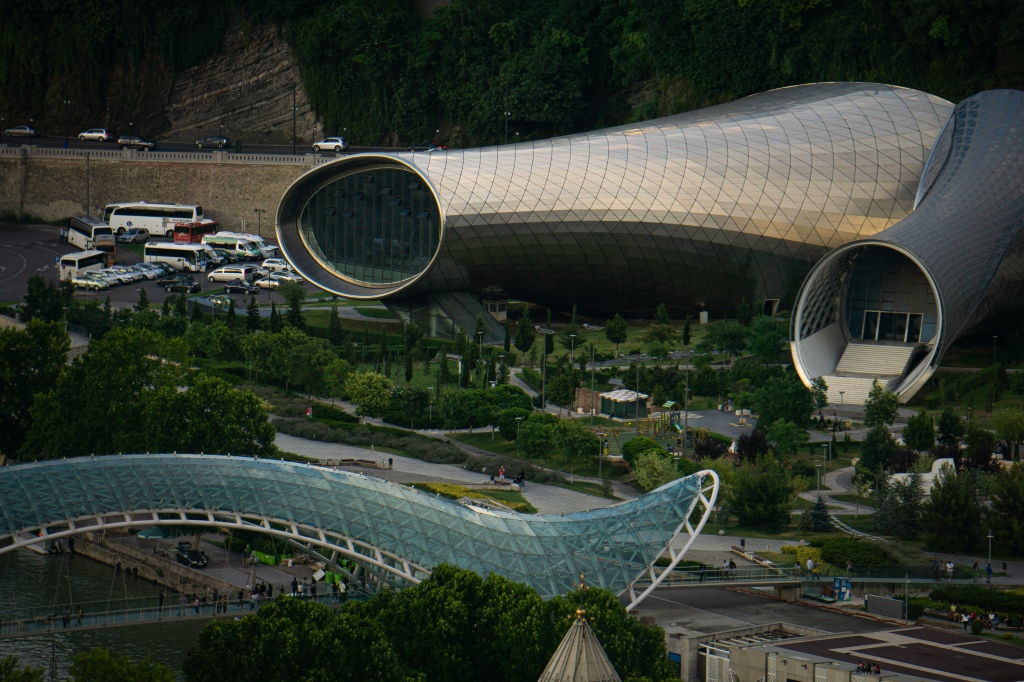


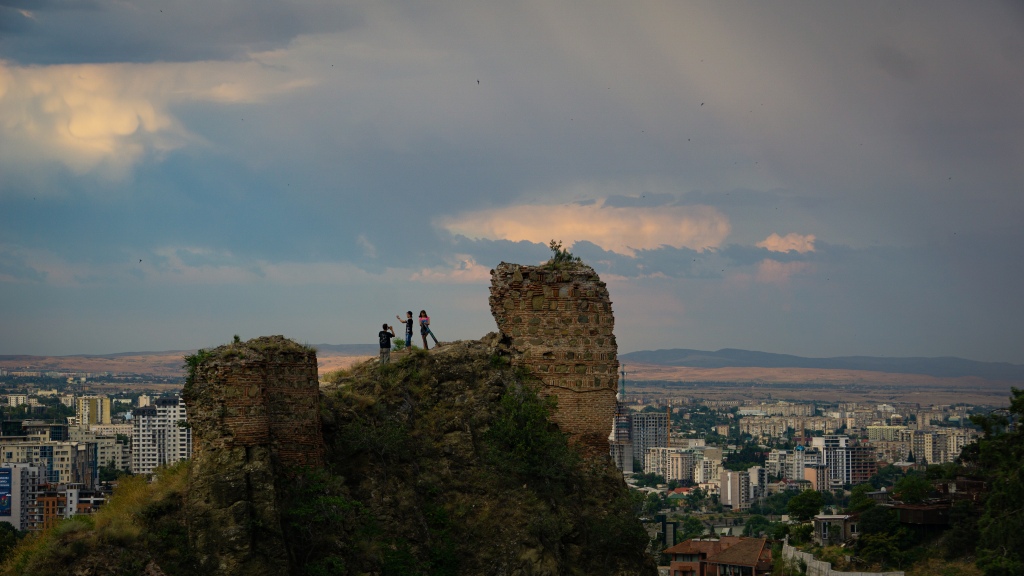
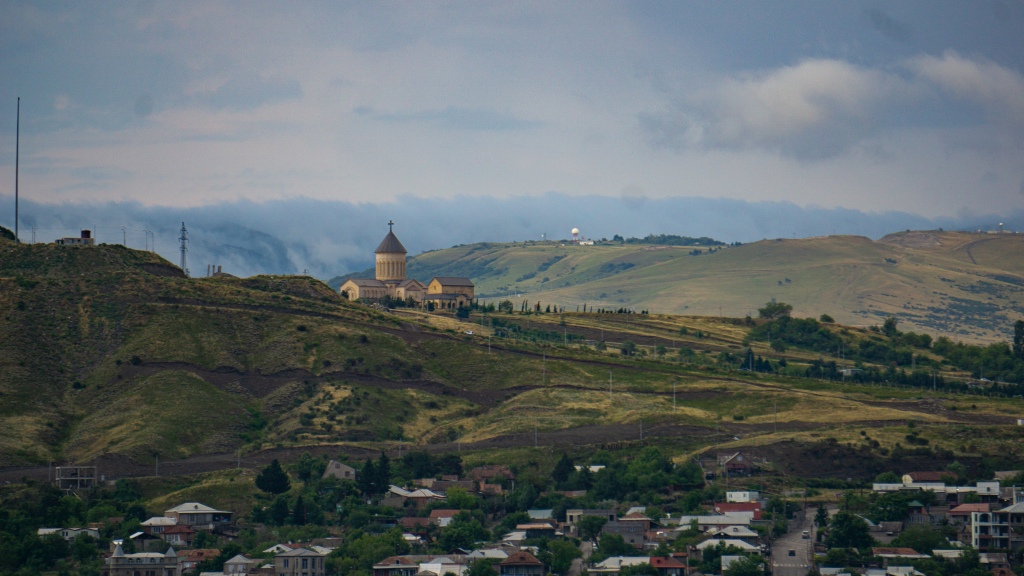












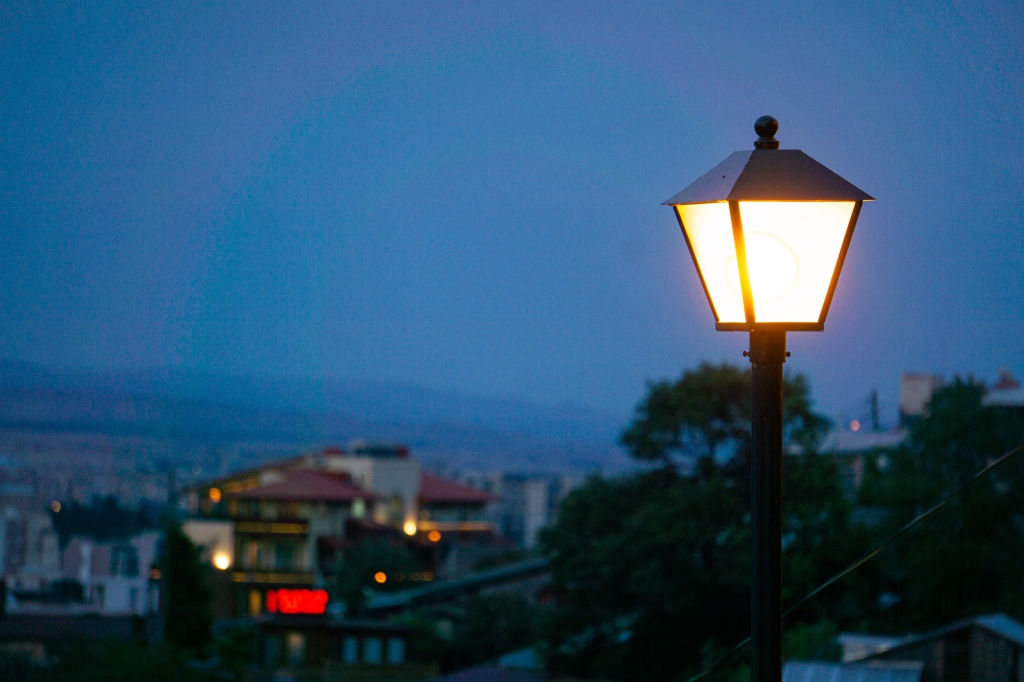













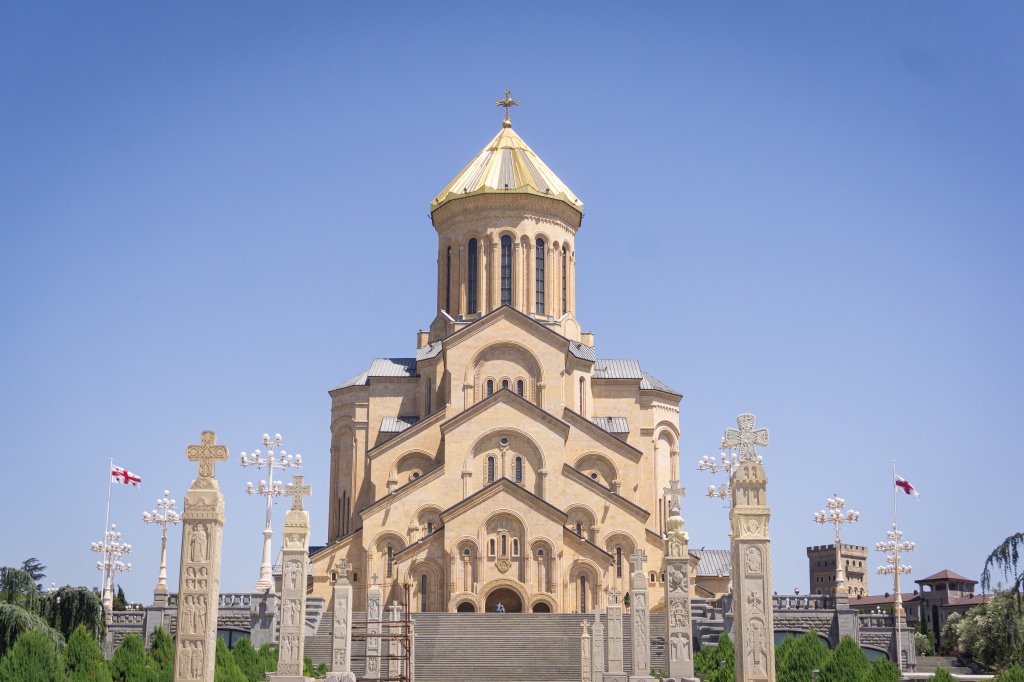
There is a great view from the fortress. We always go up there at least once every time we been to Tbilisi
LikeLike